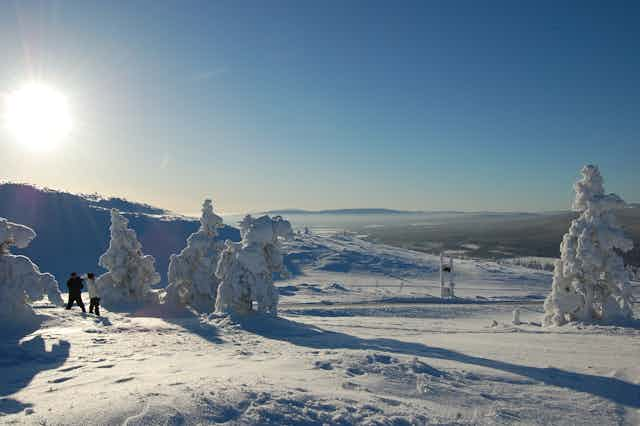Type “Arctic climate change” into a Google image search and you’ll see how the issue is largely perceived by the public: stranded polar bears, melting sea ice, icebergs and glaciers.
The anticipated melting of Arctic sea ice has also sparked global interest in the oil and gas resources that could be made available as the ice retreats, raising the prospect of a new Northern sea route between Europe and Asia.
Entirely missing from the results of the image search – and to large extent also the discussion – are the people of the Arctic, both indigenous and non-indigenous.
Indigenous rights and climate change
It may come as a surprise to many that the Arctic is also home to about four million people, about 10% of them indigenous. In Paris, Arctic indigenous people have been strongly lobbying to have their rights mentioned in the final climate agreement.
For Arctic indigenous people, climate change can be a double-edged sword. A warming world threatens their traditional livelihoods, but so do some of plans to fight climate change.
As Aili Keskitalo, President of the Saami Parliament of Norway, told a conference side event in Paris, Saami reindeer pastures are suffering from worsening snow conditions, but mining the minerals needed for wind farms, as well as the wind farms themselves, is also destroying their pastures.
Mitigation and adaptation
Given the existing greenhouse emission levels in the atmosphere, climate change cannot be completely avoided any more. So adaptation to the impacts of climate change is also needed. These impacts vary in different parts of the Arctic.
My ongoing doctoral research suggests that strategic climate change adaptation plans can help identify the most crucial questions for adaptation in each region and, when the people of the region are invited widely to participate in planning as early phase as possible, they become more committed to taking action.
Regional and local-level climate strategies have already made gains in different parts of the world. Finland and other Nordic countries have been active in this, and the Barents Euro-Arctic Council – which is concerned with the northern areas of Norway, Finland and Sweden, along with northwest Russia – is working towards climate change strategies for all its member regions, which include provisions for indigenous people.
What happens in the Arctic …
While the Paris climate talks are discussing how to limit global warming to 2°C or, as some countries have suggested, to 1.5°C at most, much higher increases are expected in the Arctic. According to IPCC, average Arctic temperatures have increased almost twice as much as globally in the past 100 years. Depending on the scenario applied, the Arctic in general could warm up more than 6°C degrees by the end of the century. Different parts of the Arctic are expected to warm in different amounts, but up to 3.8°C, or up to 9°C in the central Arctic Ocean, is expected in some regions. The changes are also expected hit the Arctic first: it is the canary in the global coalmine.
The consequences of climate change will be devastating for the Arctic but also to the rest of the world, as the melting of Arctic glaciers will lead to rising sea levels elsewhere, endangering coastal cities and small island states.
As a now-popular phrase in the region goes: “What happens in the Arctic doesn’t stay in the Arctic”. In that sense, what the Arctic has at stake in Paris, the whole world does too.

